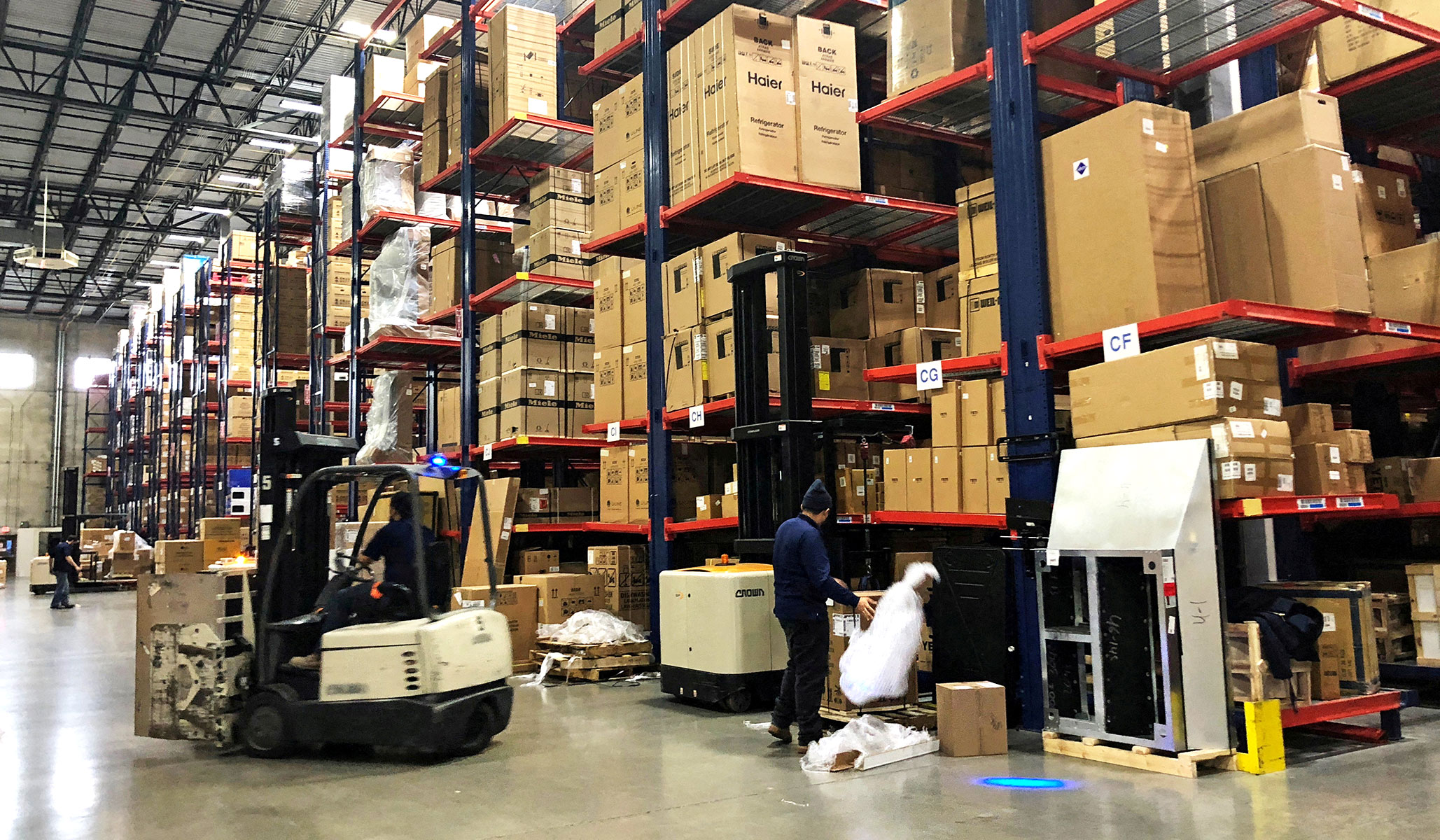
Businesses affected by supply-chain disruptions are currently looking at ways to build resilience to future supply-chain shocks. Reliance on just-in-time supply chains has left some businesses without goods as shipping delays abound, so they are looking to keep larger inventories to remedy the problem.
That covers who, what, when, why, and how, which leaves us with one question: Where? Some businesses can’t answer it because warehouses are filling up around the country.
That’s according to Miranda Spivack in the New York Times. She writes, “The shortage of commercial warehouse and industrial space is the latest fallout from pandemic-fueled growth in online shopping and shows few signs of abating.” Warehouse vacancy rates are down and rents are up:
Atlanta, the Dallas-Fort Worth area and the Lehigh Valley had the most industrial space under construction in the fourth quarter of 2021, and the national vacancy rate fell to 3.2 percent, according to a study from CBRE Group. Rents rose 11 percent in the quarter, setting a record, the study showed.
Companies are also over-buying for current demand in anticipation of future demand, Spivack writes, which is driving up rent further. She quotes one logistics executive who said, “Companies are grabbing warehouses with 50 percent more space than they need.” That’s good for them, but bad for companies that need more space to store the actual inventory they already have.
This development represents an expansion of a problem that was already appearing last year. Max Garland of Supply Chain Dive reported on the warehousing crunch in Southern California in early December. The Inland Empire is where most of the region’s warehousing is located, and the vacancy rate for industrial real estate there started to plummet in the third quarter of 2020. By the third quarter of 2021, it was below 1 percent. Due to government opposition, building new warehouses in California can often be challenging. In response, companies began looking for space in other cities.
Now, the other cities are filling up, too. Spivack writes of the plight of a chain of hardware stores between Washington, D.C., and Baltimore:
For now, the company rents space from a local self-storage company and uses a garage that came with a hardware store the company acquired. Because the pandemic increased interest in home improvement projects, hardware stores have weathered it successfully, she said. That means the company, which had about $50 million in revenue in 2021, could probably sell more items if it could store them.
If a business “could probably sell more items if it could store them,” that’s another way of saying warehouse capacity is becoming another supply-side constraint in an economy that is already full of them.
Problems such as these are not ones America is used to dealing with in the recent past. Much of our innovation and investment has been focused on technology and the “knowledge economy.” Much of that has been terrific, and supply chains have a lot to gain from better tech and data transparency. But the supply constraints that are most pressing right now are fundamentally about physical stuff that occupies three-dimensional space in buildings and has to be moved by human beings operating heavy machinery.
Record levels of private investment are now flowing into the supply-chain industry, and warehouse construction is on the rise. Market signals are working to direct resources where they are needed. Government needs to do what it can to get out of the way, starting with loosening land-use restrictions that may hinder new construction. Zoning already creates problems by making housing in some metro areas unaffordable; we don’t need to repeat that mistake with warehouses.
Preventing new construction has long been a hobbyhorse of the environmentalist movement. Consider, for example, a 2017 article from the Union of Concerned Scientists titled “Warehouses As an Environmental Justice Issue,” which considers warehouses “undesirable” and explicitly calls for using land-use regulation to limit their construction. And “environmental justice” isn’t just an academic theory anymore: It’s a major focus of Biden’s EPA and was a major subject of his early executive orders setting the tone for his administration when he assumed office.
A new supply-side agenda means getting the most out of the resources we have and making it easier for people to create more. Making sure businesses are able to expand warehouse capacity to meet demand is a good place to start.

